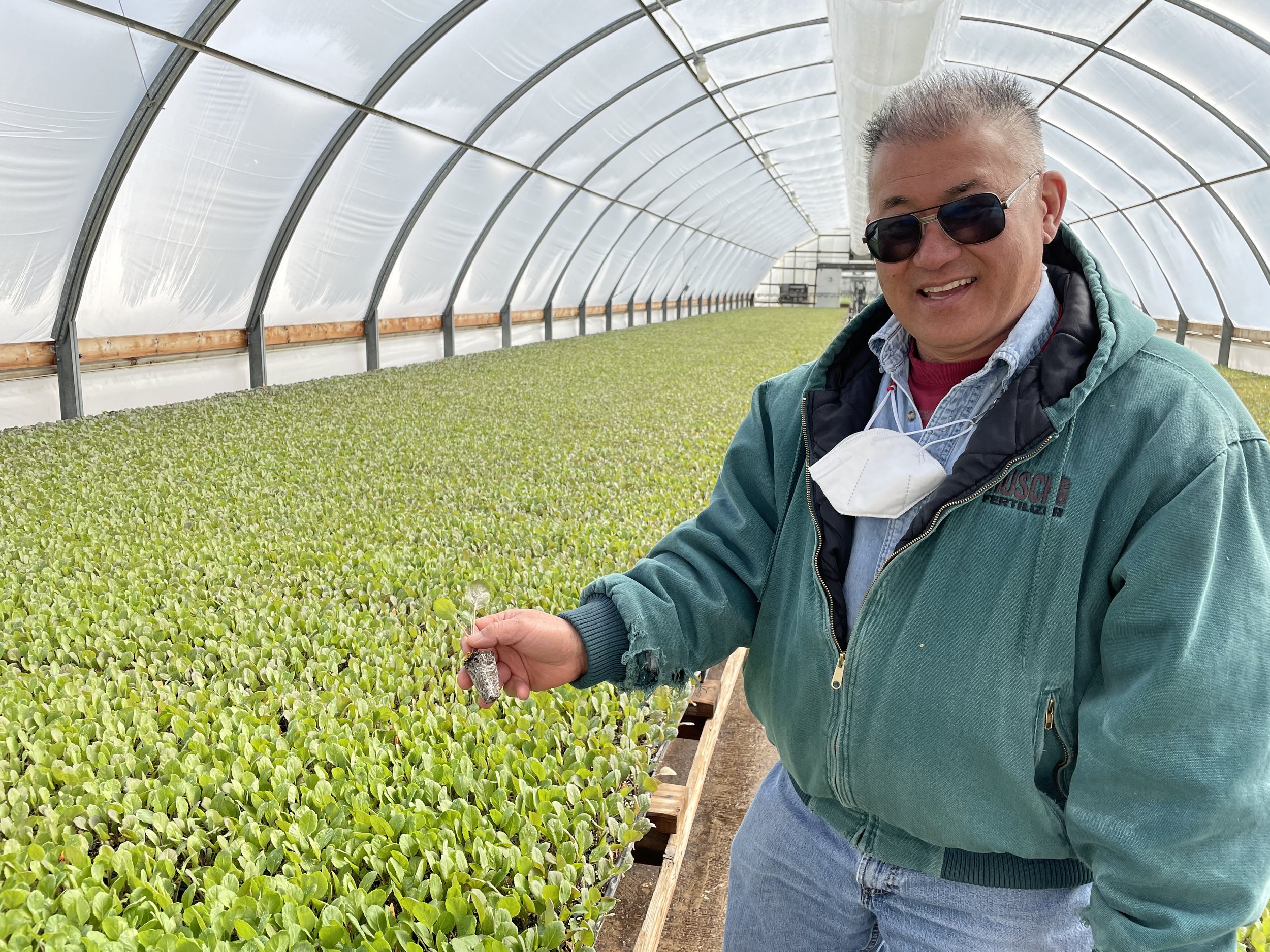VALUE OF BYPRODUCTS
COMPOSTING
What is Compost?
Compost is a product manufactured through the controlled aerobic, biological decomposition of biodegradable materials. The product has undergone mesophilic and thermophilic temperatures, which significantly reduces the viability of pathogens and weed seeds (in accordance with EPA 40 CFR 503 standards) and stabilizes the carbon such that it is beneficial to plant growth. Compost is typically used as a soil amendment but may also contribute plant nutrients. (AAPFCO definition, official 2018) Finished compost is typically screened to reduce particle size and improve soil incorporation. (US Composting Council)
The ingredients for composting include a proper balance of the following materials:
Carbon-rich materials (“browns”).
Nitrogen-rich materials (“greens”).
Water (moisture).
Air (oxygen).
Proper composting requires that the material “cook” at a relatively high temperature to break down the material and kill pathogens. As organisms decompose waste, they generate heat. Decomposition is most rapid when the temperature is between 90° and 140° F (32 - 60° C). Below 90° F (32° C), the process slows considerably, while above 140° F (60° C) most microorganisms cannot survive. Compost pile temperature depends on how the heat produced by microorganisms is offset by the heat lost through aeration or surface cooling. During periods of extremely cold weather, piles may need to be larger than usual to minimize surface heat loss. When composting high nitrogen wastes, like grass clippings in the summer, smaller piles and frequent turning are needed to provide oxygen and release excess heat. (Cornell Composting)
The microbes involved in the aerobic composting process ( Compost Microbes) fall into two groups:
Mesophilic those that are active in temperatures of (10 °C to 45 °C) and
Thermophilic active at 45°C to 70°C.
The psychrophiles a third group of microorganisms functioning at lower temperatures, in the range 10°C to 20°C (14°F to 68°F), do not play a significant role in hot composting but will be involved in keeping cold composting ticking over during in the winter in the UK and areas with a similar climate.
During the hot thermophilic stage, efforts should be made to ensure that the composting material is kept aerated and moist. Additional moisture should be added in the form of water or compost comfrey tea. Providing air and moisture are at levels that ensure biological activity is necessary to hold the high temperatures required to destroy weed seeds, pathogenic microorganisms, the eggs of parasites, and fruit flies, some of which have been shown to survive in composting material at temperatures as high as 57°C for several days. (Carry on Composting)
Carbon Nitrogen Ratio
To provide optimal amounts of these two crucial elements, you can use the carbon-to-nitrogen (C/N) ratio for each compost ingredient. The ideal C/N ratio for composting is generally considered to be around 30:1, or 30 parts carbon for each part nitrogen by weight. Why 30:1? At lower ratios, nitrogen will be supplied in excess and will be lost as ammonia gas, causing undesirable odors. Higher ratios mean there is insufficient nitrogen for optimal growth of the microbial populations so that the compost will remain relatively calm and degradation will proceed slowly. (Cornell Composting)
Articles & Resources
PUBLICATION
Composting Large Animal Carcasses
Texas A&M University — Texas A&M AgriLife Extension
PUBLICATION
Natural Rendering: Composting Livestock Mortality and Butcher Waste
Cornell University — Cornell Waste Management Institute
WEBPAGE
Mortality Composting
Cornell University — Cornell Waste Management Institute
GUIDE
Livestock Mortality Composting Protocol
USDA Animal and Plant Health Inspection Services
PUBLICATION
Rotary Drum Composting of Poultry Mortalities
Mississippi State University — Extension
PUBLICATION
Livestock Mortality Composting: For Large and Small Operations in the Semi-Arid West
Colorado State University — Extension
PUBLICACIÓN
Compostación de Ganado Muerto: Para Instalaciones Grandes y Pequeñas en el Oeste Semiárido
Colorado State University — Extension
On-Farm Spotlight
Washington-based Inaba Produce Farms share their on-farm composting project with Yakama Nation.
Photo Source: Yakama Nation Farms, Facebook Page.
Webinars
Byproduct Breakdown: Composting and Biodigestion for Meat & Poultry Processors
Composting and biodigestion of slaughter waste are increasingly being adopted as alternatives to landfill disposal. New developments in these technologies are making these technologies more readily usable for smaller meat and poultry processors.
During our one-hour roundtable conversation learn from experts leading the way in helping meat and poultry processors utilize composting and biodigestion to capture value from byproducts currently headed to landfills.
Innovations in Waste Management for Meat Processors
Niche Meat Processor Assistance Network (NMPAN), Assured Renewables, & EcoDrum
The Composting Offal Watch Party featuring Marfa Meats
Quivira Coalition
Additional Resources
BioCycle CONNECT
www.biocycle.net/biocycle-connect
US Composting Council
www.compostingcouncil.org
Cornell Waste Management Institute (CWMI)
www.cwmi.css.cornell.edu
Washington Organic Recycling Council (WORC)
www.compostwashington.org
WORC List of Composting Resources
www.compostwashington.org/resources-1
WORC List of 2023 Webinars





